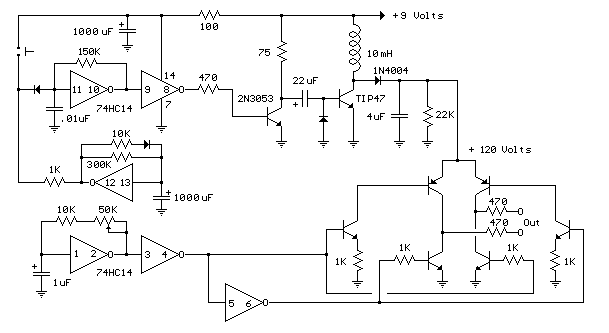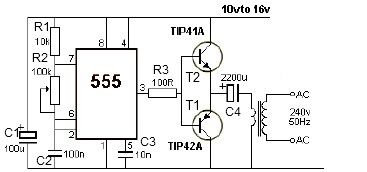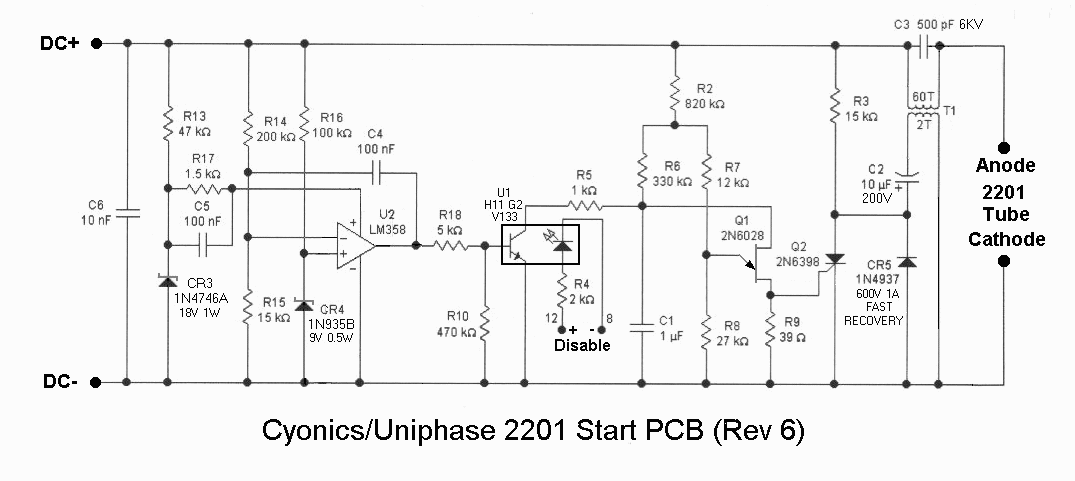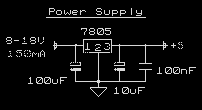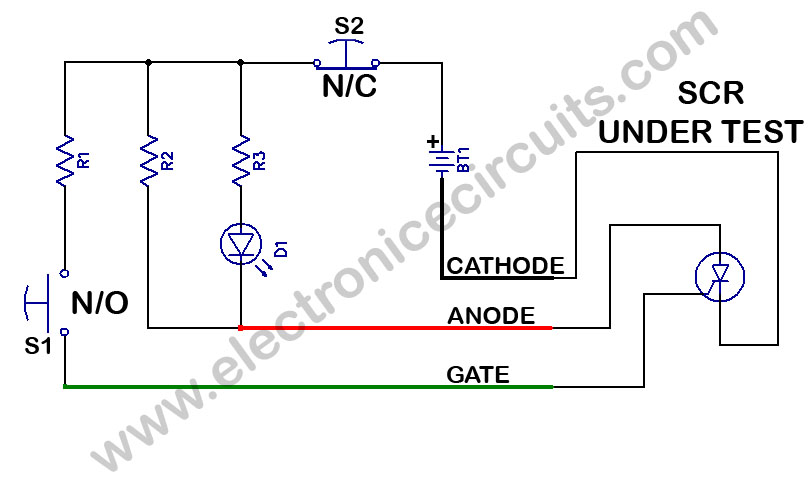
Test Bench Power Supply Schematic

This power supply circuit operates using 120 volts from household mains and should only be undertaken by individuals with the appropriate knowledge and skills to safely construct such a project. Failure to do so may result in personal injury or property damage.
The power supply circuit in question is designed to convert the 120 volts AC from the mains into a usable DC voltage for various electronic applications. The circuit typically includes a transformer, rectifier, filter, and voltage regulator components.
1. **Transformer**: The transformer steps down the 120 volts AC to a lower voltage suitable for the intended application. It also provides electrical isolation from the mains, enhancing safety.
2. **Rectifier**: Following the transformer, a rectifier circuit is employed, commonly using diodes to convert the AC voltage to pulsating DC. A full-wave bridge rectifier configuration is often utilized for better efficiency and smoother output.
3. **Filter**: The output from the rectifier is then passed through a filter, usually consisting of capacitors, to smooth out the pulsating DC into a more constant voltage. This stage is crucial for reducing ripple voltage, ensuring that the output is stable and suitable for powering sensitive electronic devices.
4. **Voltage Regulator**: Finally, a voltage regulator may be included to maintain a constant output voltage despite variations in input voltage or load conditions. This component is essential for applications where precise voltage levels are critical.
Safety precautions must be observed when working with high voltages. Proper insulation, fuses, and circuit protection devices should be implemented to prevent electrical hazards. Additionally, all components should be rated for the expected voltage and current levels to ensure reliable operation and prevent component failure.
This power supply circuit is commonly used in various applications, including powering microcontrollers, sensors, or other electronic devices that require a stable DC voltage.This power supply circuit uses 120 volts household mains and should only be attempted by someone that has the knowledge and skills to safely construct such a project. Otherwise personal injury and or property damage could result. 🔗 External reference
The power supply circuit in question is designed to convert the 120 volts AC from the mains into a usable DC voltage for various electronic applications. The circuit typically includes a transformer, rectifier, filter, and voltage regulator components.
1. **Transformer**: The transformer steps down the 120 volts AC to a lower voltage suitable for the intended application. It also provides electrical isolation from the mains, enhancing safety.
2. **Rectifier**: Following the transformer, a rectifier circuit is employed, commonly using diodes to convert the AC voltage to pulsating DC. A full-wave bridge rectifier configuration is often utilized for better efficiency and smoother output.
3. **Filter**: The output from the rectifier is then passed through a filter, usually consisting of capacitors, to smooth out the pulsating DC into a more constant voltage. This stage is crucial for reducing ripple voltage, ensuring that the output is stable and suitable for powering sensitive electronic devices.
4. **Voltage Regulator**: Finally, a voltage regulator may be included to maintain a constant output voltage despite variations in input voltage or load conditions. This component is essential for applications where precise voltage levels are critical.
Safety precautions must be observed when working with high voltages. Proper insulation, fuses, and circuit protection devices should be implemented to prevent electrical hazards. Additionally, all components should be rated for the expected voltage and current levels to ensure reliable operation and prevent component failure.
This power supply circuit is commonly used in various applications, including powering microcontrollers, sensors, or other electronic devices that require a stable DC voltage.This power supply circuit uses 120 volts household mains and should only be attempted by someone that has the knowledge and skills to safely construct such a project. Otherwise personal injury and or property damage could result. 🔗 External reference
